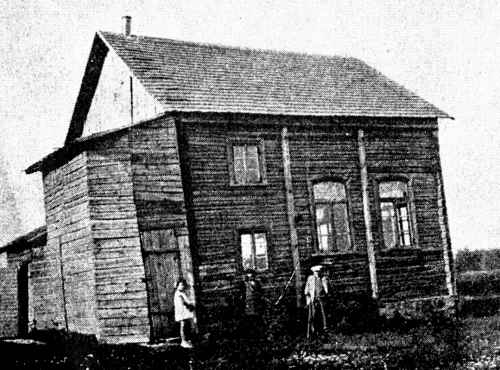 |
|
55°27' 24°02'
Surviližkis (Survilishok in Yiddish) is situated in the north of Lithuania, in the Zamut (Zemaitija) region, about 19 km. north of the Keidan (Kedainiai) district administrative center. Its beginning can be traced back to the sixteenth century in a village which belonged to noble families and the bishop of Zamut. For a long time the town retained the status of a county administrative center with big market fairs.
In 1796, 344 residents lived in Survilishok, but following epidemic outbreaks the number decreased and in 1873 its population was only 250.
Most likely, Jewish settlement in Survilishok developed at the beginning of the nineteenth century. Jews made their living in shopkeeping, peddling and crafts. Their economic situation was difficult; thus craftsmen had to change their professions and look for other means of support. Survilishok had a wooden Beth Midrash, a Heder for children and some other community institutions.
Between 1905 and 1914 the community was served by Rabbi Hayim-Meir Feldberg.
|
|
| The Beth Midrash |
Following the Law of Autonomies for Minorities issued by the new Lithuanian government, the Minister for Jewish Affairs, Dr. Menachem (Max) Soloveitshik, ordered elections to community committees, Va'adei Kehilah, to be held in the summer of 1919. In Survilishok a community committee of five members was elected: two craftsmen, one from the General Zionists Party, one from the Mizrahi and one from Akhduth. The committee worked for several years in most fields of Jewish life and was supported by the ministry of Jewish affairs in Kovno.
Despite the religious leanings of most of the Jews, votes cast in the elections for the ninth Zionist congress in 1935 gave 19 to the Labor Party and only two to the Mizrahi Party.
|
|
| A Jewish family In Survilishok 1937 |
During this period the economic situation of Survilishok Jews was difficult. According to the government survey of 1931, there was one grain shop, one textile shop and one bakery owned by Jews.In 1939 there were twelve telephone subscribers in town, but none of these were Jewish families, who at that time numbered only twenty-five.
The rabbis who served during that period were:
Ya'akov-Gershon Rabinovitz: two of his three sons, Meir and Kalman, were rabbis in Lithuanian communities and Mihal-Yits'hak was a well-known writer in Jerusalem until his death in 1948
Elhanan-Yehudah Burland (1931)
Aharon Yelnivitz (1931-1932)
Yehudah-Leib Nemyatin (from 1934).
During World War II a small number of Jews remained in the town. All were brutally murdered, in similar fashion to the other Jews of the Keidan area.
|
|
| The mass grave In Keidan (Kedainiai) |
|
|
| The tablet of the monument with the inscription in Yiddish and Lithuanian: “In this place the Hitler murderers and their local helpers on 28.8.1941 murdered 2076 Jews.” |
Sources:
YIVO, New York - Collection of Lithuanian Jewish Communities, file 674
Gotlib, Ohalei Shem, Page 204
Kamzon Y.D. - Yahaduth Lita, page 123
The above article is an excerpt from “Protecting Our Litvak Heritage” by Josef Rosin. The book contains this article along with many others, plus an extensive description of the Litvak Jewish community in Lithuania that provides an excellent context to understand the above article. Click here to see where to obtain the book.
|
JewishGen, Inc. makes no representations regarding the accuracy of the translation.The reader may wish to refer to the original material for verification.
JewishGen is not responsible for inaccuracies or omissions in the original work and cannot rewrite or edit the text to correct inaccuracies and/or omissions.
Our mission is to produce a translation of the original work and we cannot verify the accuracy of statements or alter facts cited.
 Protecting Our Litvak Heritage
Protecting Our Litvak Heritage
 Yizkor Book Project
Yizkor Book Project
 JewishGen Home Page
JewishGen Home Page
Copyright © 1999-2025 by JewishGen, Inc.
Updated 14 Feb 2019 by JH